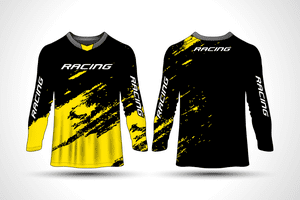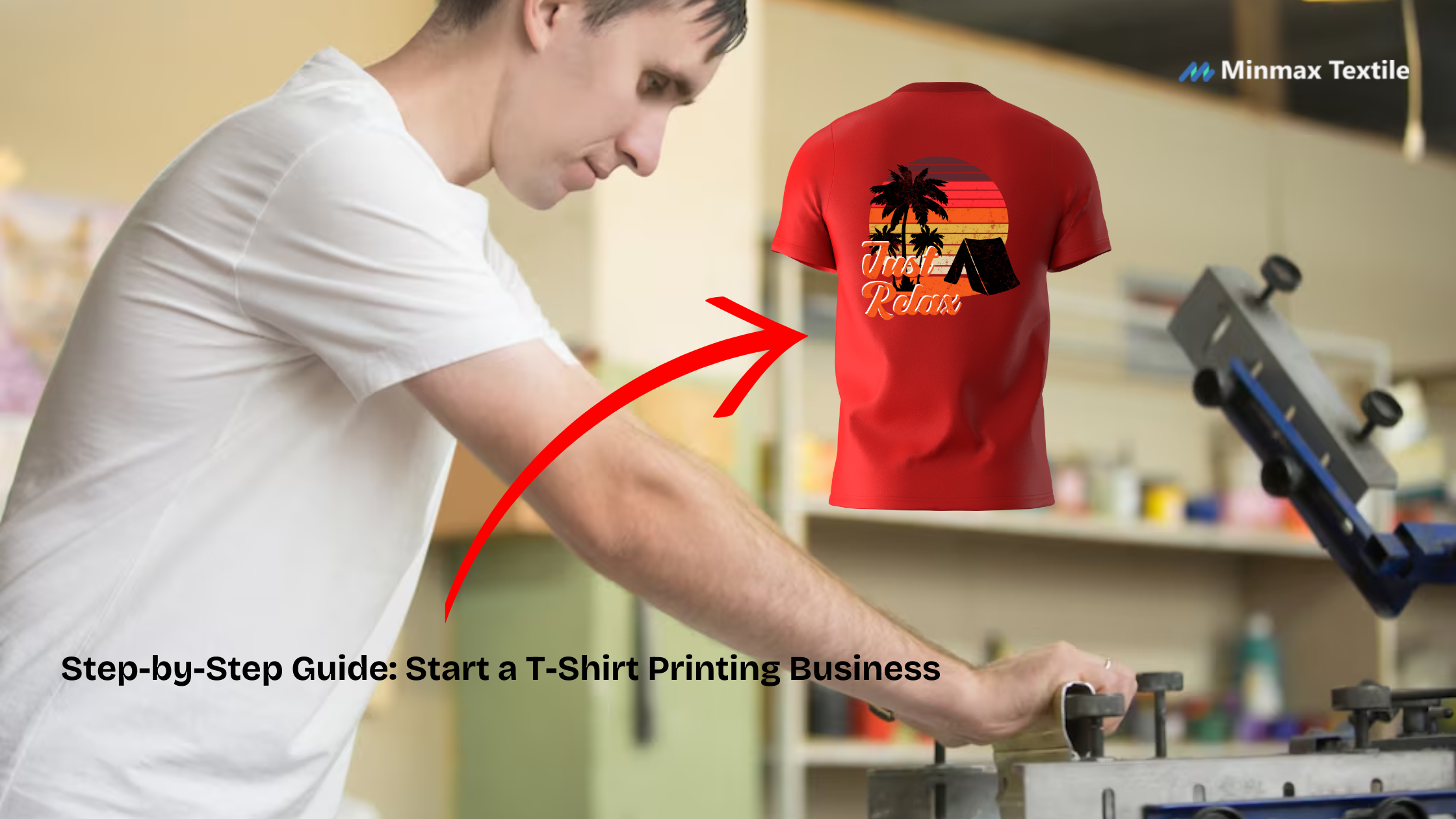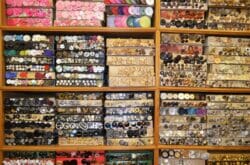Longsleeve t-shirts are a wardrobe staple that combines comfort and style. They are versatile enough to be worn year-round and serve as a blank canvas for creativity. Whether you’re a fashion enthusiast looking to make a statement or a business owner aiming to promote your brand, custom printing on longsleeve t-shirts offers endless possibilities. This comprehensive guide will walk you through everything you need to know about longsleeve t shirt printing, from understanding the basics to choosing the right techniques and materials. Let’s dive in and explore the world of custom-printed longsleeve t shirts!
What is Longsleeve T Shirt Printing?
Longsleeve t shirt printing involves applying designs, logos, or text onto longsleeve t-shirts using various printing techniques. This process transforms plain t-shirts into personalized fashion statements or promotional items. The concept of t-shirt printing dates back to the early 20th century when companies began using screen printing to produce custom designs on fabric. Over the years, advancements in technology have introduced new methods, making it easier and more affordable to create high-quality custom prints.
Why Choose Longsleeve T Shirts for Printing?
Longsleeve t-shirts offer a unique combination of functionality and style, making them an excellent choice for custom printing. Here are some reasons why longsleeve t-shirts are a popular choice:
- Versatility: Longsleeve t-shirts can be dressed up or down, making them suitable for various occasions. They are perfect for layering in colder months and can be worn on their own during cooler summer evenings.
- Comfort: Made from soft, breathable fabrics, longsleeve t-shirts provide comfort throughout the day. They offer extra coverage and warmth without compromising on style.
- Fashion Trends: Longsleeve t-shirts have become a fashion staple, with many designers incorporating them into their collections. Custom prints allow you to stay on-trend while expressing your unique style.
- Branding Opportunities: For businesses, longsleeve t-shirts offer ample space for logos, slogans, and designs, making them an effective tool for brand promotion. They can be used as promotional giveaways, merchandise, or uniforms.
Imagine this: you’re at a music festival on a chilly evening. Everyone around you is shivering in their short sleeves, but you???re comfortably warm in your custom-printed longsleeve t-shirt that showcases your favorite band’s logo. Not only are you cozy, but you???re also turning heads with your unique style. That???s the power of a well-printed longsleeve t-shirt!
Longsleeve t shirt printing combines practicality with personalization, making it an ideal choice for individuals and businesses alike. Whether you???re looking to create a fashion statement, promote your brand, or simply enjoy a comfortable and stylish garment, custom longsleeve t-shirts are the way to go.
Types of Longsleeve T Shirt Printing Techniques
Longsleeve T shirt printing techniques vary widely, each with its unique benefits, limitations, and applications. Understanding these techniques can help you choose the best method for your needs, whether you’re focusing on durability, cost, or design flexibility. Here are the main types of longsleeve T-shirt printing techniques:
1 .Screen Printing
Screen printing, also known as silk screening, is one of the most popular and traditional methods for printing on fabric. This technique involves creating a stencil (or screen) and using it to apply layers of ink on the printing surface. Each color in the design requires a separate screen, and the ink is pushed through the mesh screen onto the fabric.
Benefits of Screen Printing
- Durability: Screen prints are known for their durability. The thick layers of ink create a long-lasting design that withstands multiple washes without fading.
- Vibrant Colors: Screen printing allows for the use of vibrant, opaque inks that stand out on both light and dark fabrics.
- Cost-Effectiveness: For large batches, screen printing is cost-effective due to its low per-unit cost.
Best Practices for Screen Printing
- Use High-Quality Screens: Ensure that your screens are clean and free from defects to achieve sharp and clear prints.
- Choose the Right Ink: Different inks are available for different fabrics. Choose the appropriate ink type for your longsleeve t-shirts.
- Maintain Consistency: Keep the printing process consistent to ensure uniformity across all printed t-shirts.
2.Digital Printing
Digital printing, also known as direct-to-garment (DTG) printing, involves using a specialized printer to apply ink directly onto the fabric. This technique is similar to printing on paper but uses textile-specific inks.
Benefits of Digital Printing
- Flexibility: Digital printing is ideal for small batches and one-off designs because there are no setup costs associated with screens or plates.
- Detail and Precision: This method allows for intricate and detailed designs, including photographic images.
- Quick Turnaround: Digital printing offers a faster production time compared to traditional methods.
Best Practices for Digital Printing
- Prepare Your Artwork: Ensure your design is high-resolution and in the correct color profile for textile printing.
- Choose the Right Fabric: Digital printing works best on 100% cotton or high-cotton blend fabrics.
- Pre-Treatment: Some fabrics require pre-treatment to ensure the ink adheres properly and colors remain vibrant.
3.Heat Transfer Printing
Heat transfer printing involves printing a design onto a special transfer paper and then using heat and pressure to transfer the design onto the fabric. This method is popular for its ease of use and ability to produce detailed designs.
Benefits of Heat Transfer Printing
- Cost-Effective for Small Batches: Ideal for small quantities or one-off designs, heat transfer printing has lower setup costs.
- Variety of Materials: This technique can be used on a variety of materials, including cotton, polyester, and blends.
- Detailed Designs: Capable of producing detailed and colorful prints, including gradients and photographic images.
Best Practices for Heat Transfer Printing
- Choose the Right Transfer Paper: Different papers are designed for different fabrics and ink types.
- Apply Even Heat and Pressure: Ensure the heat press is set to the correct temperature and pressure for consistent results.
- Cool Down Properly: Allow the transfer to cool before peeling off the backing paper to avoid smudging or incomplete transfers.
4.Embroidery
Embroidery involves stitching a design directly onto the fabric using thread. This technique adds a textured, high-end look to the garment and is commonly used for logos and monograms.
Benefits of Embroidery
- Durability: Embroidered designs are highly durable and withstand wear and washing without fading.
- Premium Look: Embroidery adds a tactile, professional appearance to garments, making it ideal for corporate apparel and uniforms.
- Versatility: Suitable for a variety of fabrics, including cotton, polyester, and blends.
Best Practices for Embroidery
- Choose High-Quality Threads: Use durable, colorfast threads to ensure longevity and vibrancy.
- Stabilize the Fabric: Use backing or stabilizers to prevent the fabric from puckering during the embroidery process.
- Optimize Design: Simplify complex designs and use appropriate stitch types for the best results.
5.Sublimation Printing
- Overview: Involves transferring dye onto fabric using heat. Best for polyester fabrics.
- Advantages: Produces vibrant, durable prints, excellent for all-over printing.
- Disadvantages: Limited to light-colored, polyester-based fabrics.
6.Vinyl Cutting
- Overview: Involves cutting designs out of vinyl sheets and heat-pressing them onto the fabric.
- Advantages: Ideal for simple, single-color designs, very durable.
- Disadvantages: Not suitable for complex or multi-color designs, can feel heavy on the fabric.
7.Discharge Printing
- Overview: Involves removing the dye from the fabric where the design will be, then adding a new color.
- Advantages: Soft feel, vibrant colors on dark fabrics.
- Disadvantages: Limited fabric types, can be more expensive.
8.Puff Printing
- Overview: A type of screen printing where the ink expands to create a raised, 3D effect.
- Advantages: Unique texture, visually appealing.
- Disadvantages: Limited to certain designs and effects, not as durable as flat screen printing.
9.Water-Based Ink Printing
- Overview: Uses water-based inks instead of plastisol, soaking into the fabric rather than sitting on top.
- Advantages: Soft feel, environmentally friendly, good for light-colored fabrics.
- Disadvantages: Less vibrant on dark fabrics, can be less durable.
10.Foil Printing
- Overview: Uses a special adhesive to apply metallic foils to the fabric.
- Advantages: Creates shiny, metallic effects, very eye-catching.
- Disadvantages: Can be less durable, more expensive, not suitable for all designs.
Each printing technique has its own set of characteristics and is suitable for different types of designs and order sizes. When choosing a method, consider the fabric type, design complexity, color requirements, budget, and intended use of the T-shirts.
Choosing the Right Material for Longsleeve T Shirt Printing
Choosing the right fabric is crucial for achieving the best results in longsleeve t-shirt printing. Different printing techniques work better with specific types of fabric. Here???s a rundown of the most popular materials:
Cotton
- Benefits: Cotton is soft, breathable, and comfortable, making it a favorite for everyday wear. It absorbs ink well, resulting in vibrant and long-lasting prints.
- Characteristics: Natural fiber, hypoallergenic, and durable.
- Printing Techniques: Works well with screen printing, digital printing, and heat transfer.
Polyester
- Benefits: Polyester is lightweight, durable, and resistant to shrinking and wrinkling. It is moisture-wicking, making it ideal for athletic wear.
- Characteristics: Synthetic fiber, quick-drying, and resistant to fading.
- Printing Techniques: Best suited for sublimation printing and heat transfer.
Blends
- Benefits: Blended fabrics combine the best qualities of cotton and polyester, offering comfort, durability, and ease of care.
- Characteristics: Versatile, cost-effective, and available in various ratios.
- Printing Techniques: Compatible with screen printing, digital printing, and heat transfer.
Specialty Fabrics
- Bamboo: Soft, eco-friendly, and breathable, bamboo fabric is gaining popularity for its sustainability and comfort.
- Organic Cotton: Grown without pesticides and synthetic fertilizers, organic cotton is an eco-friendly choice.
- Rayon: Known for its silky feel and drapability, rayon is often used in fashion-forward designs.
|
Fabric Type |
Benefits | Characteristics |
Printing Techniques |
|
Cotton |
Soft, breathable, vibrant prints | Natural, durable |
Screen, digital, heat transfer |
|
Polyester |
Lightweight, durable, moisture-wicking | Synthetic, quick-drying |
Sublimation, heat transfer |
|
Blends |
Comfortable, durable, versatile | Combined qualities of cotton and polyester |
Screen, digital, heat transfer |
| Eco-friendly, breathable | Sustainable, soft |
Screen, digital |
|
|
Organic Cotton |
Eco-friendly, hypoallergenic | Natural, pesticide-free |
Screen, digital |
|
Rayon |
Silky, drapable | Semi-synthetic, soft |
Screen, digital |
Choosing the right fabric ensures that your prints look great and last long, providing comfort and style to the wearer.
Design Tips for Longsleeve T-Shirt Printing
Creating appealing and effective designs for longsleeve T-shirt printing involves considering both aesthetic and practical aspects and also is an exciting part of the printing process. Here are some design tips to ensure your T-shirt prints stand out and are of high quality:
Understanding Your Audience
Before you start designing, it???s essential to know who you???re designing for. Consider the preferences and interests of your target audience. Are they young and trendy, or do they prefer classic and timeless designs? Tailoring your design to your audience???s tastes will make it more appealing.
Design Principles
- Color Theory: Use color effectively to evoke emotions and convey messages. Complementary colors can make your design pop, while monochromatic schemes offer a sleek, modern look.
- Typography: Choose fonts that align with your design???s theme. Avoid using too many different fonts to maintain readability and cohesion.
- Layout: Balance elements within your design to create visual harmony. Consider the placement of text and images to ensure the design looks good on the t-shirt.
Using Design Software
Several design tools can help you create professional-quality designs. Some popular options include:
- Adobe Illustrator: Ideal for vector designs and illustrations.
- Photoshop: Great for raster images and photo editing.
- CorelDRAW: Another powerful vector graphics editor.
- Canva: User-friendly option for beginners with pre-made templates.
Preparing Your Design for Printing
Once your design is ready, you need to prepare it for printing to ensure the best results.
File Formats and Resolution
- File Formats: Save your design in a high-quality format such as PNG, PDF, or EPS. These formats preserve detail and support transparency.
- Resolution: Ensure your design is at least 300 DPI (dots per inch) to maintain clarity and detail during printing.
Color Profiles and Printing Techniques
- Color Profiles: Use the RGB color profile for digital designs and the CMYK profile for printing. This ensures accurate color reproduction.
- Printing Techniques: Different printing methods require specific file preparations. For example, screen printing requires separate layers for each color.
Mockups and Proofs
Creating mockups allows you to visualize how your design will look on a longsleeve t-shirt. Many design tools offer mockup templates where you can place your design on a t-shirt template. Before finalizing your order, request a proof from the printing service to check for any errors and make necessary adjustments.
Finding the Right Longsleeve T-Shirt Printing Service
Finding the right printing service for your longsleeve T-shirts involves careful consideration of various factors to ensure you receive high-quality prints that meet your specific needs. Here are steps and tips to help you choose the best printing service:
What to Look for in a Printing Service
Choosing the right printing service is crucial for ensuring high-quality results. Here are some factors to consider:
- Quality and Consistency: Look for a printing service with a reputation for delivering high-quality prints. Check customer reviews and ask for samples to assess the print quality and consistency.
- Pricing and Turnaround Time: Compare pricing from different services to ensure you get the best value for your money. Also, consider the turnaround time, especially if you have a tight deadline. Some services offer expedited options for an additional fee.
- Customer Service and Support: Good customer service is essential for a smooth printing experience. Choose a service that offers responsive and helpful support to address any issues or concerns.
Comparing Popular Printing Services
Here???s a comparison of some popular printing services in the industry:
Service |
Quality |
Pricing |
Turnaround Time |
Customer Service |
| Minmaxst | High | Medium | Fast | Excellent |
| Printful | High | Medium | Fast | Excellent |
| Custom Ink | High | Medium | Moderate | Very Good |
| Vistaprint | Medium | Low | Fast | Good |
| Teespring | Medium | Low | Slow | Moderate |
| Printify | High | Variable | Variable | Good |
Selecting the right printing service will ensure your longsleeve t-shirts look great and meet your expectations.
Final Thoughts
Longsleeve t-shirt printing offers endless possibilities for creativity and branding. By understanding the various printing techniques, choosing the right materials, and implementing effective design and marketing strategies, you can create custom longsleeve t-shirts that stand out and resonate with your audience. Whether you???re an individual looking to express your style or a business aiming to promote your brand, custom longsleeve t-shirts are a versatile and impactful choice.
FAQs
1.Can I print on both the front and back of the long-sleeve t-shirt?
Yes, you can print on both the front and back, as well as the sleeves. The placement of the print depends on your design preferences and the printing method used.
2.What is the minimum order quantity for custom long-sleeve t-shirt printing?
Minimum order quantities vary by printing method and printer. Screen printing usually requires a higher minimum due to the setup cost, while DTG printing can accommodate smaller orders, even single pieces.
3.How do I prepare my design for printing on long-sleeve t-shirts?
Ensure your design is high resolution (300 DPI or higher) and in a vector format (such as AI or EPS) or a high-quality raster format (such as PNG or TIFF). Check with your printer for specific file requirements.
4.How long does the printing process take?
Turnaround times vary by printer and order size. Typically, it can take anywhere from a few days to a few weeks. Rush orders may be available for an additional fee.
5.How should I care for printed long-sleeve t-shirts?
To preserve the print, wash the t-shirts inside out in cold water, use a mild detergent, and avoid bleach. Tumble dry on low heat or air dry, and avoid ironing directly over the print.





